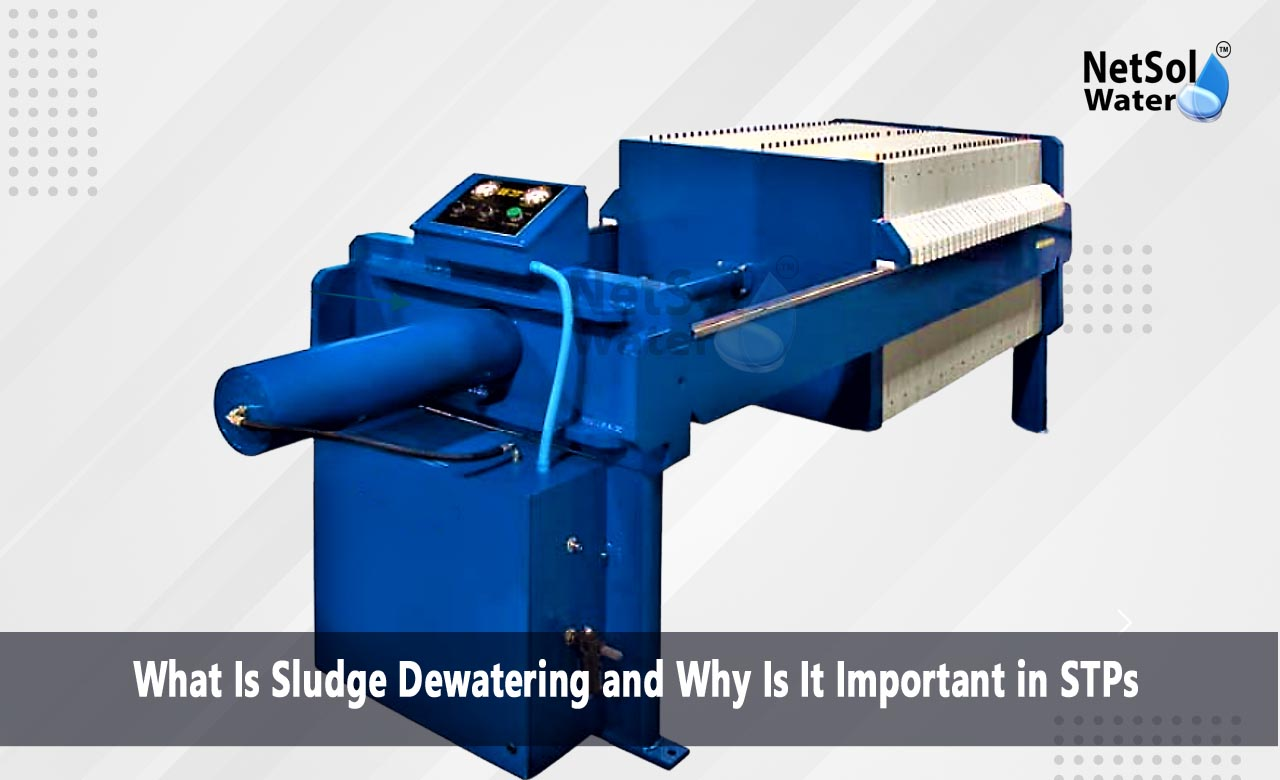What Is Sludge Dewatering and Why Is It Important in STPs?
Sludge dewatering drives the success of sewage treatment plants. It helps manage the heavy sludge that forms when wastewater moves through various treatment steps. Without this step, sludge can slow plant performance and harm the environment. When water drains away from sludge it becomes lighter and smaller. This change makes storage, easier and speeds up disposal. It also cuts down on transport costs and reduces the chance of leaks or spills. Netsol Water stands out as a leading manufacturer of the machines that make sludge dewatering smooth. Our systems work day after day to help treatment plants meet strict rules and serve local communities well. By choosing Netsol Water equipment plants get proven results that last and support cleaner water and safer surroundings.
What Is Sludge Dewatering?
Sludge dewatering transforms wet waste into a form that treatment plants can handle more easily. This process cuts the water content of sludge after treatment steps finish. Removing water shrinks sludge and lightens its load. Let us have a look at some common methods that deliver this change.
Filter Press Method
The filter press method forces water out of sludge by pressing it between plates. This approach leaves a solid cake that is easier to move. Plants that need very dry sludge often choose this method. It works well when operators run it on a regular schedule.
Centrifuge Method
The centrifuge method spins sludge in a drum at high speed. The spinning pushes water away from the solids. Dry solids collect at the edge of the drum. This method acts fast and suits medium to large plants. Operators can run it in continuous or batch modes.
Belt Press Method
The belt press method squeezes sludge between two moving belts. The belts press out water as they move. The process works with less power than other methods. That makes it a good choice for smaller plants or plants that want to save energy.
Why Is Sludge Dewatering Important?
Sludge dewatering offers key benefits that help treatment plants run smoothly. It cuts the burden of heavy sludge and opens up new ways to use the dry material. Let us have a look at some reasons why it matters so much.
Lower Waste Volume
By draining water from sludge the total waste becomes much smaller. This shrinkage helps plants use less space for storage. It also means fewer trucks must haul the load away. Plants gain more room on site and pay less for transport.
Cost Saving
When sludge weighs less, plants spend less on fuel and labour. Lighter loads also lower the wear on vehicles. Over time these savings add up and free budget for other upgrades or staff training.
Better Environmental Safety
Wet sludge can leak and cause odour problems. When plants remove the water, they limit the chance of spills. Dry sludge seals more easily and poses less risk to air or water. This step helps treatment plants meet strict pollution rules.
Helps in Safe Disposal
Dewatered sludge moves more safely into its final use. Some plants send it to landfills. Others use it to produce biogas or soil amendments. Removing water unlocks these reuse options.
How Does It Support STPs?
Sewage treatment plants face a steady stream of wastewater each day. This flow creates large amounts of sludge that need care. Sludge dewatering tackles this challenge and keeps plants on track. Let us have a look at some ways it boosts plant performance.
Smooth Operation of Plants
When sludge arrives in a drier form equipment handles it with ease. Pumps and conveyors face less strain. Operators can focus on processing more water instead of fixing backups. This balance keeps the entire plant moving without delay.
Reduces Health Hazards
Moist sludge can attract pests and release harmful gases. These risks end when plants drain the water. Dry sludge keeps workers and neighbours safe. It also cuts down on bad smells around the facility.
Supports Reuse Options
Once plants remove most of the water the sludge can find new uses. Some operators turn it into fuel for boilers or digesters. Others mix it into soil blends for land reclamation. Dewatering makes these options possible and adds value to the waste.
Conclusion
Sludge dewatering shapes the daily life of sewage treatment plants. It shrinks waste loads and lowers costs. It also helps plants meet rules and protect their communities. Netsol Water designs and builds systems that guide sludge dewatering to its best results. Our reputation as a leading manufacturer rests on trust and solid performance. If you want to improve sludge dewatering in your STP reach out today. Contact Netsol Water to learn more or request a consultation. Let our team show you how sludge dewatering can transform your operation.
Contact Netsol Water at:
Phone: +91-9650608473, Email: enquiry@netsolwater.com



